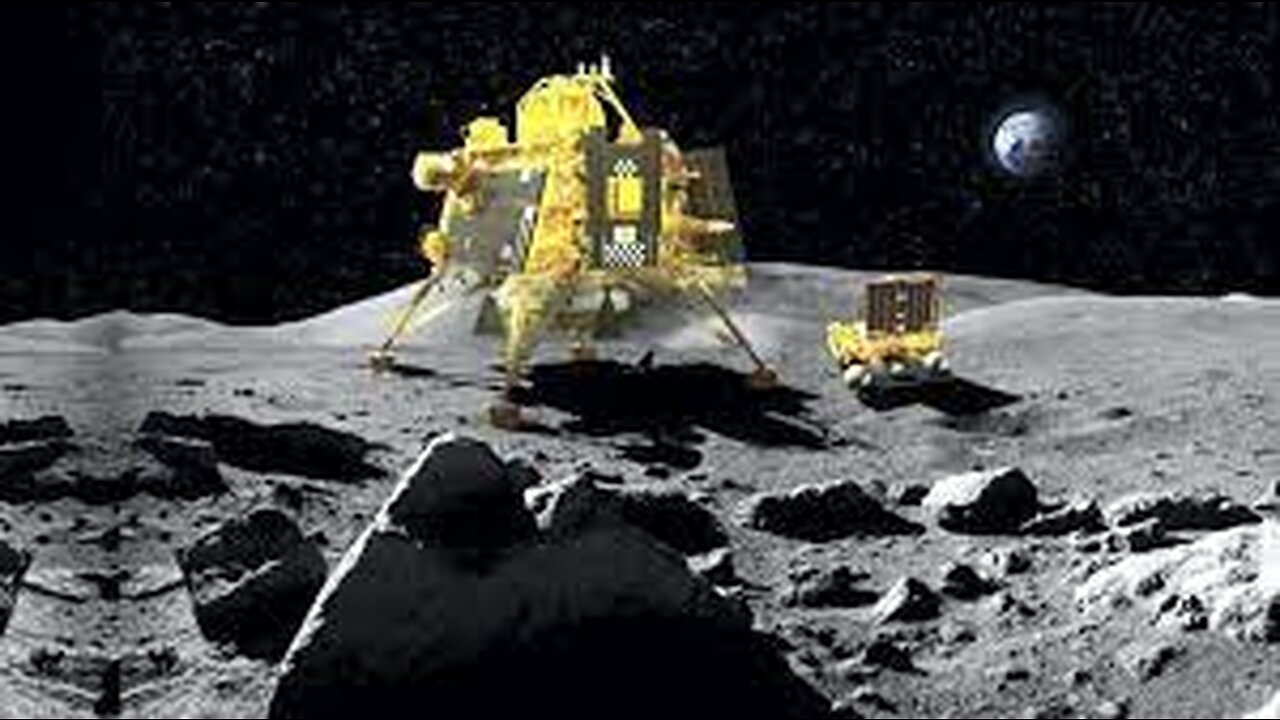Premium Only Content

First 8K Video from Space - Ultra HD|Chandrayaan-3
Chandrayaan, which means "moon craft" in Sanskrit, refers to the series of lunar missions conducted by the Indian Space Research Organisation (ISRO). Chandrayaan-1, India's first lunar mission, marked a significant milestone in the country's space exploration journey.
Chandrayaan-1 was launched on October 22, 2008, by the ISRO using the Polar Satellite Launch Vehicle (PSLV-C11). This mission aimed to explore the moon's surface and gather valuable scientific data. It carried 11 scientific instruments, including a Moon Impact Probe (MIP) that was released and impacted the lunar surface, furthering our understanding of the moon's composition and characteristics.
One of the most notable discoveries of Chandrayaan-1 was the presence of water molecules on the moon's surface. This discovery challenged earlier assumptions about the moon being completely dry and significantly contributed to our understanding of the moon's geological history and its potential as a future resource for human space exploration.
Chandrayaan-1 was initially planned to operate for two years, but the mission was abruptly terminated in August 2009 due to communication problems. Despite this setback, the mission was considered a success, as it achieved its primary objectives and provided a wealth of data for lunar scientists and researchers.
Following the success of Chandrayaan-1, India embarked on Chandrayaan-2, the country's second lunar exploration mission, which aimed to land a rover on the moon's surface. This ambitious mission showcased India's growing capabilities in space exploration and cemented its position as a significant player in the global space community.
In summary, Chandrayaan-1 was India's first lunar mission, launched in 2008 using the Polar Satellite Launch Vehicle (PSLV-C11). It made significant contributions to lunar science, including the discovery of water molecules on the moon's surface. This mission marked a historic milestone in India's space exploration endeavors and set the stage for future lunar missions, including Chandrayaan-2.
-
 LIVE
LIVE
The Tom Renz Show
1 hour agoJudges Are Completely Immune From Lawsuits
87 watching -
 1:18:46
1:18:46
Awaken With JP
2 hours agoCracker Barrel Makes Brilliant Decision, Trump Bans Flag Burning and More - LIES Ep 105
41.4K13 -
 29:24
29:24
Stephen Gardner
1 hour ago🔥Trump's Moves Leave CNN Speechless!
9.65K18 -
 1:06:37
1:06:37
Sean Unpaved
4 hours agoCincinnati's Sack King Stays: Decoding the Deal & the NFL's Open-Ended Questions
38.2K -
 LIVE
LIVE
StoneMountain64
4 hours agoWARZONE LEGEND RETURNS. GHILLIE SUIT $20k TOURNEY.
144 watching -
 2:11:17
2:11:17
Side Scrollers Podcast
6 hours agoINSANE Illegal Migrant Propaganda Xbox Game + Paypal REFUSES To Pay Dev + More | Side Scrollers
39K1 -
 55:31
55:31
SportsPicks
4 hours agoCrick's Corner: Episode 72
10.6K -
 30:39
30:39
ROSE UNPLUGGED
2 hours agoMore of Less: Purpose, Discipline & the Minimalist Mindset
16.7K -
 1:02:18
1:02:18
Timcast
5 hours agoDemocrat States Ignore English Language Mandate For Truckers, DoT Vows Crackdown Amid Trucker Mayhem
163K50 -
 1:57:04
1:57:04
Steven Crowder
7 hours agoAdios & Ni Hao: Trump Sends Abrego Garcia to Africa But Welcomes 600K Chinese to America
370K353